 |
 |
 |
| |
NON-INVASIVE TESTING IN CHRONIC HEPATITIS D VIRUS
(HDV) INFECTION: WHAT WORKS BEST TO RULE OUT CIRRHOSIS?
|
| |
| |
DDW Wash DC 2024 May 18-21
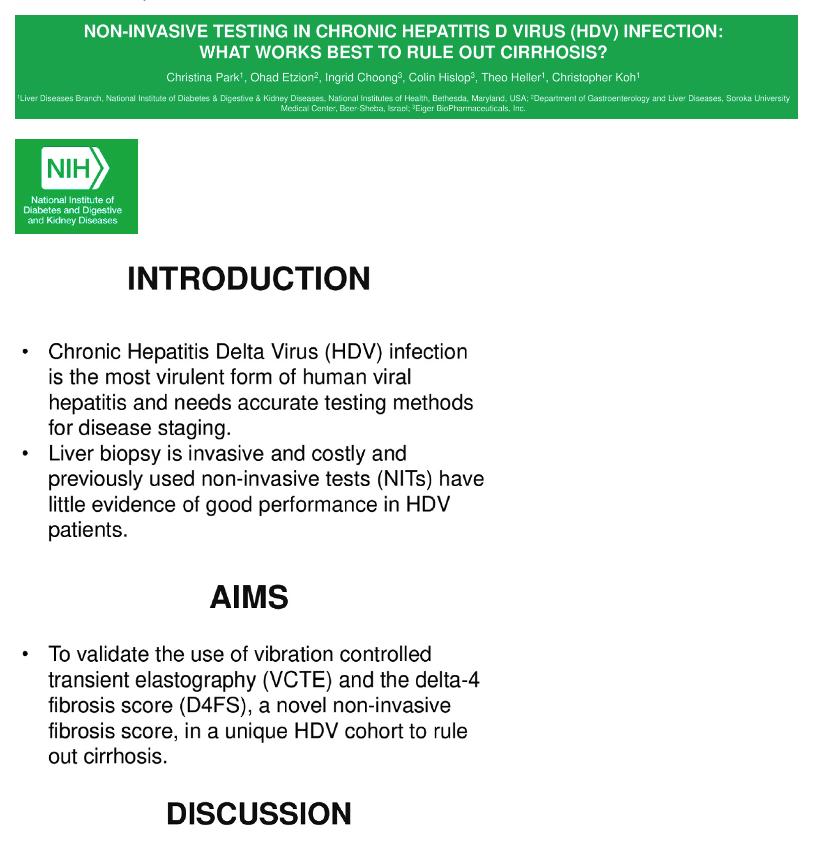
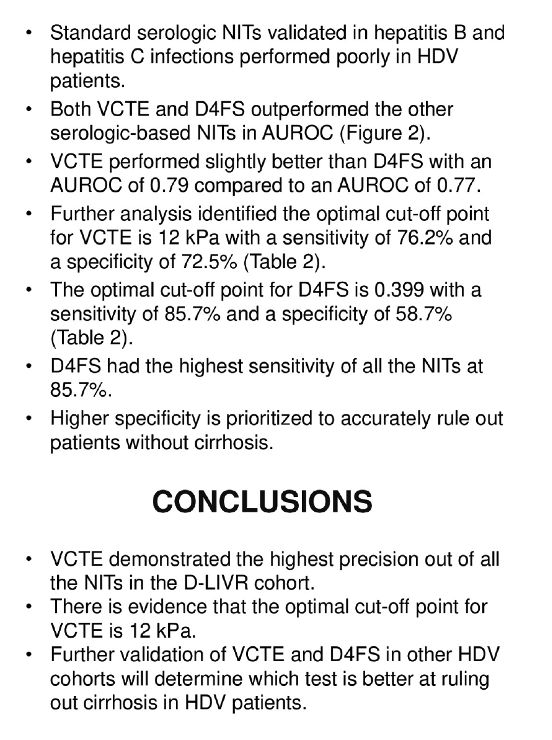
ABSTRACT
Background: Chronic Hepatitis D Virus (HDV) infection results in the most aggressive form of viral hepatitis causing rapid progression to cirrhosis. Non-invasive tests (NITs) that assess fibrosis including the AST to Platelet Ratio Index (APRI), Fibrosis-4 score (FIB-4), AST to ALT ratio (AAR), vibration-controlled transient elastography (VCTE) and the delta-4 fibrosis score (D4FS) have been explored in a few HDV cohorts with varied success. We aimed to further assess the performance of these NITs in the largest Phase 3 HDV clinical therapeutic trial (D-LIVR) for their ability to rule out cirrhosis.
Methods: Chronic HDV patients enrolled in the D-LIVR trial underwent pre-treatment VCTE (Fibroscan®), laboratory, and histologic evaluation. Cirrhosis was determined by histology (Ishak fibrosis A5) and compared with calculated NITs (based on their seminal publications) by area under receiver operating characteristics (AUROC). For the best-performing NIT, additional analysis was done to find an optimal cut-off point, along with sensitivity and specificity, using the Youden Index.
Results: Of the 407 patients in the D-LIVR study, 209 (51%) patients had evaluable baseline biopsies and VCTE. Baseline characteristics of the 209 patients: 145 (69%) male, mean age 42.9 y (SD: 11.3), 133 (63.6%) Caucasian, 68 (32.5%) Asian, 3 (1.4%) Black, 5 (2.4%) other. Mean fibrosis by Ishak = 3.2 (SD: 1.6), inflammation by histologic activity index (HAI) = 8.9 (SD: 2.6), and cirrhosis was identified in 42 (20%) patients. Mean ALT = 117.5 A± 90.2 U/L, AST = 75.5 A± 49.8 U/L, platelet count = 180.4 A± 57.1, GGT = 54.7 A± 47.6 U/L. Mean NIT measurements: APRI = 1.37 A± 1.15, FIB-4 = 1.99 A± 1.45, AAR = 0.70 A± 0.22, VCTE = 11.7 A± 6.0 kPa, and D4FS = 0.49 A± 0.75. Of the NITs that utilized serology, the D4FS had the best AUROC performance (0.7696) compared to APRI (0.6668), FIB-4 (0.6871), and AAR (0.6050). However, VCTE alone slightly outperformed the D4FS with an AUROC of 0.7890. Further analysis of VCTE found that the optimal cut-off point for the D-LIVR cohort is 12 kPa with a sensitivity of 0.76190 and specificity of 0.72455. Sensitivity and specificity of the NITs are described in the table below.
Conclusion: Of the NITs assessed, VCTE demonstrated the highest precision based on maximum sensitivity and specificity in the D-LIVR trial patients. The optimal cut-off point for VCTE in ruling out cirrhosis in this group was 12 kPa. This provides added evidence that VCTE has clinical applicability in HDV patients based on one of the largest Phase 3 clinical trials performed in HDV subjects.
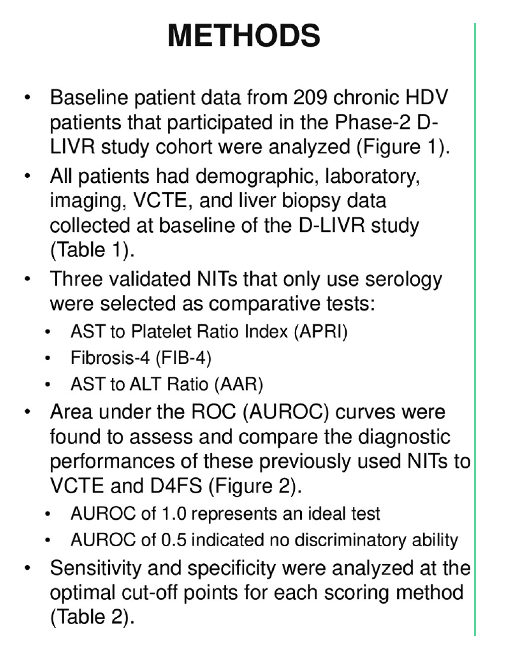
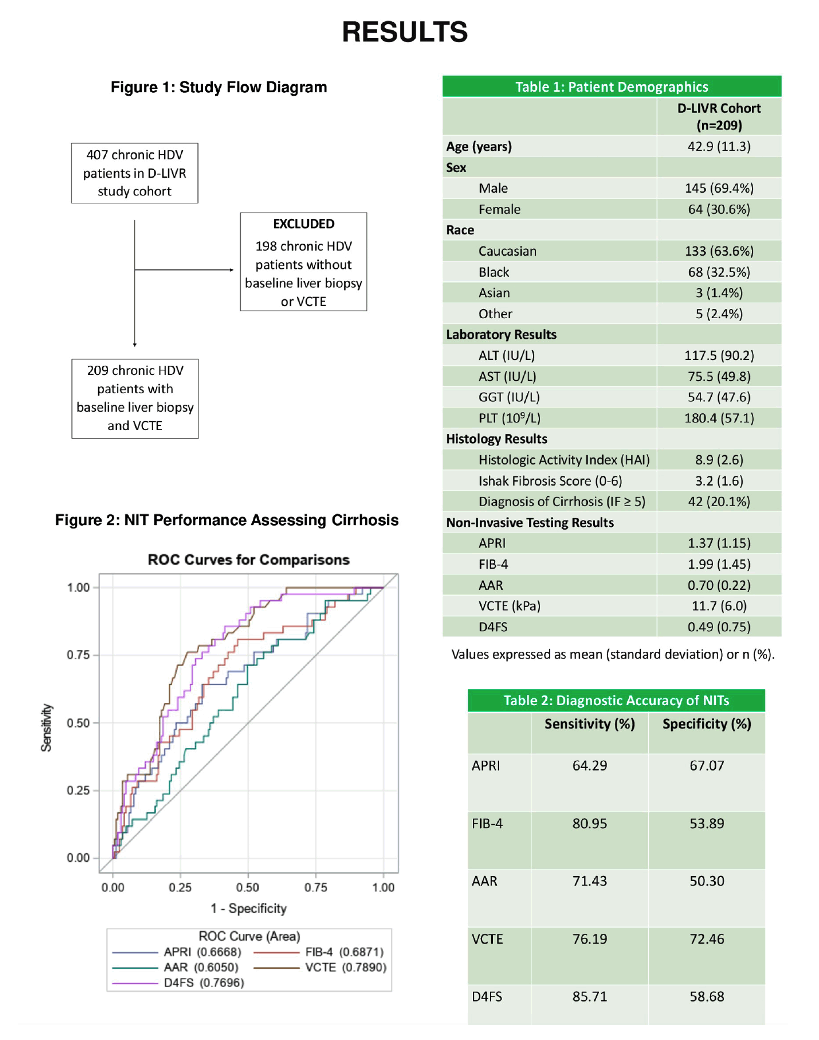
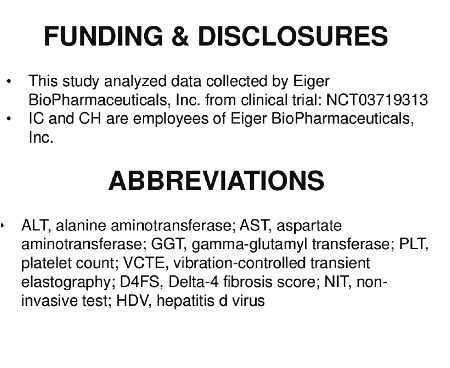
|
| |
|
 |
 |
|
|